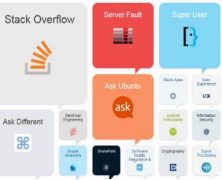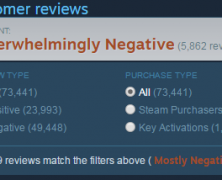It’s that time of year again. The time of year where I thank vendors for sucking slightly less than their competitors over the previous 12 months. Some do this through product excellence, some through excellence in customer service. As a rule, I find vendors trying, and so I take an almost absurd amount of pleasure in reminiscing on those that, in one form or another, make the grade. To this end, I will start the year’s festivities with a joke about how to define how “ready” a product is for general consumption. Google ready: 4 years, 3 PhDs and an army of undergrads later it runs in 30 datacenters on 5 continents, but only two people know how. Hyperscale ready: with a trained $1M/yr specialist and a support team of 5 it will support 50,000 clients at 99.95% uptime. Enterprise ready: with a team of 20 certified technicians, 4 middle managers and a vendor engineer it will integrate with our mainframe. SMB ready: one of the two burnt out husks that were people remembers enough about how it works to restart it. Trevor Pott ready: issues reduced to one 4:00am phone call per annum. So without further delay, here is my totally biased list of 2016’s kickass vendors that have made my own personal life easier: Scale Computing Scale Computing make hyperconverged appliances. Servers (3 or more) with built-in storage that work together to allow virtualized workloads to achieve high availability without needing a SAN. Scale’s solution is built on top of KVM and uses their own custom software for monitoring, self-healing, management and a user interface. Scale doesn’t expose nearly as many of the hypervisor’s features to the user as rivals like VMware. From one perspective, this means that Scale is nowhere near...
Drones: shiny happy cloudy future
posted by WeBreakTech
In Breakroom, WeBreakTech staffers chat about the last couple of weeks in tech. What’s new? What’s broken? What are we working on? What makes us want to hurl things into traffic? Sarcasm, salty language, and strong opinions abound. _____________________________________________________________________________________________ Josh.Folland: I propose we complain about the implications of drones this week. Drones with cameras and advertising drones hassling drivers. Trevor.Pott: I think you should start, Josh, as you are familiar with some of the regulations around this for personal and commercial use in Canada. Josh.Folland: Re: the second article, where Uber has drones advertising. I had joked on social media that if this ever happened to me, I’d get a big fisherman net or train up an eagle and get me a free drone. However, this won’t happen in Canada – at least not without companies like Uber throwing money at lobbying efforts to change the laws. Here, it’s illegal to fly a drone over a crowded area or even in the field behind your house without getting the proper requisitions from Transport Canada. Which means filling out like a 20-page proposal, from what I’ve seen. Katherine.Gorham: I’m grateful for that. The idea of advertising drones makes me grumpy. Josh.Folland: The law isn’t really going to care if you fly a drone in the field by your house, but your neighbors might. The law does care if you fly a drone over an army base or airport. Trevor.Pott: I’d prefer no drones near me, unless they’re delivering me things. Josh.Folland: Even that will require much lobbying. As it stands now, the legislation emphatically does not allow for it. Last I heard they were trying to carve out an altitude zone to enable it but I don’t know if it got anywhere. Katherine.Gorham: There was...
Who should have your fingerprints?
posted by WeBreakTech
Josh.Folland: Did you see this article? “Feds Walk Into A Building, Demand Everyone’s Fingerprints To Open Phones.” Katherine.Gorham: Wow. Dystopian much? Josh.Folland: Very. But I was always under the impression the law could compel you to give up your fingerprint. Trevor.Pott: Josh is correct. Josh.Folland: Them storming a building to collect them en masse is mildly frightening. (I use mildly because this sh*t just doesn’t surprise me anymore). Katherine.Gorham: They had a warrant. A super-vague warrant, to be sure, but it wasn’t totally random. Trevor.Pott: I don’t care. They eliminated the presumption of innocence for an entire building’s worth of people.That’s bulls**it. Josh.Folland: They had a warrant to try to find evidence to get a less-stupid warrant. Katherine.Gorham: I’m not saying it was a good move. Just not a warrantless bad one. Also, what’s the data retention policy on randomly collected fingerprints? Forever? Josh.Folland: I can only imagine it goes in “your file”, yeah. Prosecutors would love if they had every person’s fingerprint forever, no? As opposed to waiting until they get put into the system. Trevor.Pott: They collected my fingerprints at the airport when I applied for a NEXUS card, and told me they would be retained by both nations, presumably forever. Once they have that info, does anyone expect them to give it up? Katherine.Gorham: No. But I wondered if there was any specific legislation about it. Trevor.Pott: There’s lots of precedent in the UK for Law Enforcement Agencies (LEAs) to not delete fingerprints, DNA and more when they are supposed to. I expect all members of the Five Eyes to carry equal antipathy towards their own citizens. In Canada, we have Bill C-51, which effectively hands our LEAs carte blanche to do anything they want. Katherine.Gorham: I don’t really care if...
Finding troubleshooting help
posted by Katherine Gorham
One of the problems with being an accidental sysadmin – or really any kind of sysadmin – is that other people make inaccurate assumptions about what you can do and what you know. “You work for a computer company, don’t you? I can’t get to my files and there’s this popup asking me for something called BitCoin…. Can you just get rid of the popups for me?” (Sure. Along with your entire operating system, which I am going to have to delete and then reinstall. I hope you’re up to date on your backups. Please tell me you have backups. Oh, you thought I could just make the ransomware magically go away?*) Sometimes the weird demands come simply because the person doing the asking doesn’t know what is possible in the ever-changing world of IT. But sometimes the requested help is theoretically possible. Maybe. You think. It’s then a case of hitting the internet to see if a) other people have the problem b) it really is fixable and c) someone can explain how to fix it in enough detail that you aren’t mucking blindly about editing the Windows Registry, for example. (Don’t do that, at least not blindly.) You could just head straight to the search engine and give your Google-fu a workout. But this column is supposed to be about saving you time, so behold: sites where you can ask your troubleshooting question and have a decent chance of it being answered usefully. Stack Exchange “That’s the big one,” according to my highly unscientific survey of exactly one other sysadmin. But he does have decades of experience, and he has a good point. Stack Exchange is enormous. And more valuably, it is organized and focused. Stack Exchange is actually a collection of...
SFP cables suck and I hate working with them.
posted by Josh Folland
Last week I had to head to one of our colocation sites to retrieve some hardware to be moved to another city, and to test out some new swank jank 10GbE switches. These new switches run over SFP+, which means making sure the switches are compatible with the transceivers on the cables. As soon as I discovered this was what was on the to-do list for the day, my stress levels immediately rose. See, SFP+ cables are great in theory. They’ve got a little PCB with a fancy clip, they do 10GbE, and… Well, that’s about it. It’s a cable. It is a conduit for electrons to move. What I hate most about SFP cables is the clip and tab. It’s truly awful design – if you break the plastic tab your only hope for disconnecting the cable is to get a small screwdriver or something similar into the latching mechanism. This is where switch and cable designers must want you to lose your temper. Switch designs, for some brilliant reason, have the ports of the SFP cables oriented such that the latches are facing one another on switches where there’s two rows of ports stacked one on top of another (or, at least the switches I’ve encountered). This means that if you make the mistake (or are forced to due to capacity) of connecting two SFP cables one on top of each other and break the tabs, they’re fused to the switch permanently for all intents and purposes. Depending on the design of the latching mechanism on the cable, there may very well be no feasible way to get a screwdriver or other tool into the gap. I know what you’re thinking. I must be doing it wrong. Like most hardware in IT, there’s...
Data Security: don’t just roll your eyes at leaked UFO emails
posted by WeBreakTech
In Breakroom, WeBreakTech staffers chat about the last couple of weeks in tech. What’s new? What’s broken? What are we working on? What makes us want to hurl things into traffic? Sarcasm, salty language, and strong opinions abound. _____________________________________________________________________________________________ Trevor.Pott: “WikiLeaks publishes cryptic UFO emails sent to Clinton campaign from former Blink 182 singer.” So. WikiLeaks. Josh.Folland: This only confirms my suspicions that politicians and celebrities are lizard people. Trevor.Pott: The WikiLeaks thing has some potential implications for real-world IT. Putting the politics aside, let’s look at what’s happened here. Somehow, WikiLeaks got hold of a bunch of stuff they shouldn’t have. In some cases, we know the source (such as Chelsea Manning). In others, we don’t (such as the DNC leaks). But in each case, the information has been leaked not only with the intention of making information known, but with theater: the intention of causing the maximum possible amount of hype around the leaks. I think this adds a dimension to any data security discussion. We’re beyond simply “your data may go walkabout” and well into “people may use leaked data as part of a coordinated smear campaign that can hurt far more than a simple data dump.” Do we think this new approach by WikiLeaks will change the dynamics of data protection for corporations and/or governments? Josh.Folland: Is this really anything new, though? People have been digging up dirt and using it against one another forever. The mechanics of how you get said data are all that’s changing. Trevor.Pott: That’s an interesting question, and I think that goes down two paths: 1) is the danger of a leak only from the people leaking it, and 2) does timing make a leak more sensitive, and maybe there is a call for...
Lit Screens: Killer robots, exploding phones, and new controllers
posted by Josh Folland
Blizzard launches its first PvE event in Overwatch Blizzard launched its first PvE event this week: Halloween Terror! Everyone’s favorite tank Reinhardt tells a tale about the legendary Dr. Junkenstein and his creations. You and three other players fight wave after wave of suicide-bombing robots and super-tanky Reapers, Roadhogs, Mercies and a Junkrat spamming grenades with infinite ammo. It’s a fun change of pace from the strictly PvP-based main game. Once again, Blizzard shows its mastery over creating a universe and putting it to work. Players were already clamoring for an Overwatch campaign, saying they’d be willing to put out additional cash on top of the $40 main game if they were to ever put one together. Halloween Terror is very derivative – you defend a point against hordes of zombie-like machines – but that hardly detracts from the fun. The same could be said for nearly anything Blizzard has ever done: Blizzard is the best in the business at taking something familiar, putting their own spin on it and knocking it out of the park – especially when it comes to PvE content. Halloween Terror is completely free if you’ve already got Overwatch, and along with the new brawl mode there’s a handful of fun new skins, voice lines, victory poses and other cosmetic content that you can use in the main game. Samsung axes the Note 7 permanently Samsung fully recalled their flagship phone, the Galaxy Note 7 earlier this week. After an initial recall due to the phone exploding or lighting on fire, they went back to the drawing board and issued patches limiting battery life and fast charging. A few weeks have passed since then and the issues have not been resolved, so Samsung has gone with a full, permanent...
Preorders are crap and you’re part of the problem
posted by Josh Folland
Back in the day, video game preorders were hugely beneficial. We didn’t have digital distribution – at least not on the scale we’ve come to love and hate. A preorder meant you went to your local EB Games, Gamestop, Future Shop or $preferred_local_retailer, they’d reserve a copy of the physical copy of the game for you so you’d be guaranteed to play it as soon as possible. I have fond memories of going to the mall at midnight to pick up highly anticipated titles like Halo 3 and then skipping class the next day because I stayed up all night playing (yeah, I was that kind of student). I’d get to meet all kinds of fans and members of the local gaming community while waiting in line, and in some ways it validated my decision: I wasn’t the only one crazy enough to do something like that. Event organizers would hand out flyers to their upcoming tournaments and gatherings, and everyone was nice and chummy. Ah, nostalgia. Since then, we’ve gotten our hands on better internet connections and more reliable digital distribution mediums like Steam, Origin, Battle.net, gog.com and plenty more. Along with this convenience came the advent of day-one patches, locked DLC being included in the main game’s files and all forms of DRM butchery consumers despise. This really started to ramp up around 2008-2009. Right around the same time, game developers saw the console market start to explode thanks to smash hit titles like Call of Duty 4: Modern Warfare, the aforementioned Halo 3, Gears of War, Assassin’s Creed and a wide variety of other franchises that pushed out yearly installments. PC gamers repeatedly got the short end of the stick. On the few-and-far-between occasions that a developer chose to publish their game...
Esports acquisitions, Virtual Reality and Political Overtones, Oh My!
posted by Josh Folland
In the second installment of Lit Screens, I want to talk about some of the recent esports acquisitions and shine a spotlight on the Oculus Rift and the folks behind it. Let’s jump right in, shall we? Celebrities, athletes and billionaires investing in esports organizations Esports investments have been popping up more and more from big-time organizations and individuals. A few weeks back, Team Liquid, an esports organization with a storied history as the go-to StarCraft community website alongside its teams, players and staff, announced the sale of the controlling interest to Peter Guber (co-owner of the Los Angeles Dodgers) and Ted Leonsis (Washington Capitals and Wizards owner) as well as several other investors. Together, they formed a new esports ownership group called aXiomatic, helmed by CEO Bruce Stein. Just before that, Team Dignitas – another esports organization with a long history across many competitive titles over the last 13 years – also sold a controlling interest to Scott Harris and David Blitzer, co-owner of the New Jersey Devils; and before that Shaquille O’Neal’s organization NRG esports picked up team Mixup (formerly Luminosity Gaming) after this candid tweet: Continuing the trend is electronic music producer, DJ and professional partier Steve Aoki as he invests in team Rogue, who’ve developed quite a name for themselves in both Overwatch and Counter-Strike: Global Offensive. Steve has been a long-time gamer and is passionate about esports, and after seeing Rogue’s dominance in Overwatch over the last several months it comes as no surprise someone invested in the team. What’s of particular interest here is the explosive entrance of investors in the past year. There have been no shortage of sponsors over the esports industry’s lifetime, but those have generally been limited to companies trying to push their products or services...
What’s Good About IPv6? More Addresses.
posted by WeBreakTech
In Breakroom, WeBreakTech staffers staffers chat about the last couple of weeks in tech. What’s new? What’s broken? What are we working on? What makes us want to hurl things into traffic? Sarcasm, salty language, and strong opinions abound. _______________________________________________________________________________________________ Trevor.Pott: So we could discuss the transition to IPv6, which is apparently what I need to do for a client this weekend. Josh.Folland: F*ck IPv6. Trevor.Pott: Dude. Josh.Folland: I get that it’s a necessary evil and it’s got all kinds of great things, but I like remembering *.*.*.40 Katherine.Gorham: What great things? I thought the foot dragging about the move to IPv6 was because there WEREN’T great things. Just vulnerabilities and administrative headache. Trevor.Pott: There aren’t. But we have now reached the point where ISPs aren’t handing out IPv4 addresses to people in the North, and other not-major-urban-centers. If you aren’t on IPv6, you’re not going to be able to serve all customers anymore. And that is a big switch that I have only started to see in the past few months. Katherine.Gorham: Wait… IPv4 doesn’t talk to IPv6? Trevor.Pott: It does not. IPv4 is 32-bit addressing. It CAN’T talk to Ipv6, which is 128 bit addressing. It simply has no way to do so. In order to “transition” to Ipv6, you need to get IPv6 from your ISP (or ask Sixxs nicely for a tunnel and a subnet), then implement BOTH stacks. Katherine.Gorham: But most of the world is still IPv4. Surely someone thought up a workaround? Josh.Folland: …There is not an algorithm to translate it? I never thought they were entirely mutually exclusive. Trevor.Pott: No, there is no direct, supported workaround. There are totally unsupported ways to do it, but in general it was decreed by the ivory tower gods 20 years...
Playlist-based Matchmaking is crap.
posted by Josh Folland
In preparation for Respawn’s highly-anticipated Titanfall 2 (dropping at the end of the month), I reinstalled its predecessor last week. The last time I had played Titanfall was November 2014, according to my Origin account. The game is highly mechanical and there are a lot of advanced tactics to brush up on. Being built on the Source engine (which itself was built from iD tech/Quake engine code), you’ve got full air control and momentum conservation in the form of bunnyhopping, on top of the already-excellent wall running and double jumping. All of this is promised to return in the sequel, so I figured why not re-master these techniques to get a bigger edge on the competition in Titanfall 2. I want to make one thing perfectly clear before I dive into the meat here: Titanfall is fun. One of the most fun FPS games I have ever played, in fact – there’s an excellent blend of tactics, movement, aim and general FPS skill that doesn’t often get to shine in such a broad spectrum in other games. With so many different ways to play, it certainly ticks the box for the competitive mantra “easy to learn, hard to master.” The gameplay is beautifully sculpted in such a way that you can only come to expect from the geniuses behind Call of Duty 4: Modern Warfare (the best Call of Duty title to date, I might add). It sounds cool, it looks cool, it’s fast-paced, there’s an extremely high skill ceiling However, nearly everything else about the game is crap. The netcode certainly leaves something to be desired – hit registration is lackluster, the tick rate (the rate at which the server updates the world with new information, ie: you shot the bad guy and he...
The Accidental Sysadmin
posted by Katherine Gorham
Welcome to first installment of The Accidental Sysadmin, a column for people on the front lines of IT who are still wondering how they got there. Because I share an office with this guy, I have been hearing a lot about the death of the sysadmin. This isn’t what it sounds like. It wasn’t Colonel Mustard in the server room with the cable crimper. There are no overworked nerds combusting from sheer stress. I’m talking about the demise of sysadmin as a job title. Actually, I’m quite sure that there are overworked nerds combusting from sheer stress, but that’s not what I’m on about here. Whether you call your sysadmin a computer systems administrator, the IT guy, some flavour of “engineer” or even an “architect”, the jobs are under threat. Technology is evolving, demands are changing, and this is changing the nature of systems administration. Corporate IT is getting easier to administer. No seriously, stop laughing for a minute. It is. IT administration is still frustrating and labor-intensive, but it is no longer the sort of job that only a highly-trained, expensively-accredited Mensa member with advanced skills in black magic can perform. Advances in hardware mean that businesses who formerly needed their own data center can make do with a half-rack of hyperconverged gear shoved in the corner of any room with decent air conditioning. Businesses who never needed a data center in the first place may have simply done away with most of their equipment and turned to various public cloud services for their compute, storage, applications, and analytics. As my office-mate wrote, “These tools make it easy for a handful of half-way competent generalists to accomplish what once required teams of specialists.” That’s me: the halfway competent generalist. Don’t you work at a computer...
Archival cloud storage can be an affordable backup layer
posted by Trevor Pott
Welcome to the first blog in our new column. This column is dedicated to hardware, software and services for the Small and Medium Business (SMB) and commercial midmarket spaces. In most countries companies too small to be generally called enterprises make up over 99% of employer businesses, yet are often the poorest served by technology vendors and technology journalism. This is Tech for the 99%. Backups are the bane of many an IT department. Big or small, nobody escapes the need for backups, and backups can get quite expensive. Smaller organizations trying too backup more than a terabyte of data usually have the hardest time finding appropriate solutions. This is slowly changing. For many years I have avoided advocating backing up data to the public cloud. Even the cheapest backup service – Amazon’s Glacier – was too expensive to be realistically useful, and the backup software that talked to it was pretty borderline. Times changed. Software got better. Cloud storage got cheaper. A new competitor on the scene emerged in the form of Backblaze with their B2 product. B2 offers archival cloud storage for $0.005 (half a cent) per gigabyte USD. That’s notably less expensive than Glacier’s $0.007 per gigabyte. That makes Backblaze B2 $51.20 USD/month to store 10TB. That’s an inflection point in affordability. B2 and Glacier both cost to retrieve data, and they’re slow. They aren’t the sort of thing any organization should be using as a primary backup layer. It doesn’t make a lot of sense to use them to regularly restore files that staff accidentally delete, or to cover other day-to-day backup needs. Similarly, B2 and Glacier aren’t immediate-use disaster recovery solutions. You can’t back up your VMs to either solution and then push a button and turn them on...
TwitchCon, Brooklyn Beatdown, No Man’s Sky and Hearthstone
posted by Josh Folland
Welcome everyone! This is the first installment of Lit Screens, a new column we’re running on WeBreakTech where I’ll briefly summarize some of the more noteworthy things that have happened or are happening soon in gaming this past week. Without further ado, let’s dive in! TwitchCon 2016 – September 30th to October 2nd This is Twitch’s second year running their conference meme-fest and they’ve moved out of the Moscone in San Francisco over to the San Diego Convention Center. This should prove to be a better fit for the event as the Moscone is split between a few different buildings. After seeing 20,000 people for their first event it’s fair to say they’re managing their growing pains well with a change of venue. I personally haven’t been, but it’s high on my list of gaming conferences to check out at least once in my life. Attendees get to meet some of their favorite streamers, check out new hardware, games and merch, as well as the ever-entertaining stage shows, panels and competitive exhibitions. The H1Z1 King of the Hill Invitational is back with the grand finale being played out on Sunday over at twitch.tv/twitch. After the massive success of Bob Ross’ “The Joy of Painting” marathon stream that last year, there’s even a Bob Ross Paint-a-long event taking place. The itinerary for TwitchCon is jam-packed, so head over to http://www.twitchcon.com/schedule/ to see the full schedule. Between all of the activities and events happening at TwitchCon, if you’re remotely interested in streaming, the personalities involved, esports, charity gaming, Twitch or even internet culture in and of itself, there’s something you’ll want to see at TwitchCon. ESL One NY and Brooklyn Beatdown – Oct 1st to 2nd ESL One NY sports both Counter-Strike: Global Offensive and also marks...














